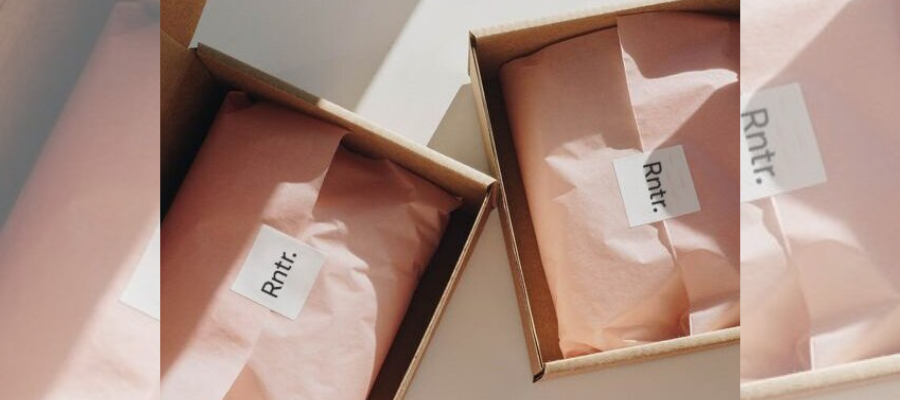Jenna Flood: How To Navigate Sustainable Fashion
It can be hard to navigate the (new) sustainability market as a caring and conscious consumer. Even though we might have quite a clear idea of our own values – we might be eco-friendly or looking to pollute as little as possible – how does this translate into something tangible, something we can actually action?
We chatted with Jenna Flood, ASI stylist and ethical fashion blogger to get some industry know-how.
Jenna, can you tell us who are the worst offenders of fast fashion?
The worst offenders are usually the biggest brands with Zara and H&M usually quoted as the two worst. But any brand that charges as low as $5 for a T-shirt is cutting costs somewhere in their supply chain, whether it be not paying a fair wage to their garment workers or using poor quality fabrics.

What brands would we be surprised to find out are not ethical?
There are a lot of brands that advertise their “green” credentials but aren’t that eco-friendly at all. US brand Everlane often say they are radically transparent, but the Good On You app rates them as ‘not good enough’ due to the fact that they have no evidence of paying a living wage in their supply chain and no evidence to say they avoid hazardous chemicals.
So we’ve heard the term greenwashing being thrown around lately, can you explain what greenwashing is and who does it?
Greenwashing is when a brand or company makes misleading claims about the environmental benefits of a product, service or practice. In fashion, it is usually seen when a big fast-fashion brand releases an “Eco Collection” by using organic cotton or recycled plastics. These lines are sold alongside many cheaply made fast fashion garments from the same brand and are often made with the same unsustainable practices.
Again, H&M and Zara are classic examples of Greenwashing. One of H&M’s collections included Pinatex (leather alternative made from pineapple leaf waste) . It’s a great start, but it can be viewed as greenwashing as the focus is placed on the sustainable fabric and not on the way the garment was actually made.
If I am unable to afford to shop sustainable only brands how can I limit my impact?
Sustainable fashion is more expensive, yes. But that is only because we compare it to the $10 fast fashion T-Shirts. If you want to limit your impact, shop secondhand and buy less.
Shopping secondhand is a great way to still get the feeling of keeping your wardrobe fresh but not have a negative impact. You will not only spend less and find unique items to create an individual style, but you will also reduce the need for new textiles by reusing what is already out there. Not keen on trawling through an op shop? Try a consignment store like Mutual Muse. They are well-curated and you are more likely to find your favourite brand.
By shopping less, you are not only saving money, you can also shop your own wardrobe and create new looks. You can also try renting a garment for a big event, or even attend a clothes swap event! There are so many eco-friendly possibilities when you think outside the box and explore different ways to live sustainably.
How many times should I be wearing my clothing?
‘The limit does not exist! Wear them until holes appear and then patch up those holes and keep wearing them!
Honestly, we should be wearing our clothing as much as we can. I like to keep in mind the Cost Per Wear (CPW) value of a garment when buying clothes. Think of everything you own (or could own) less as static objects and instead as things you can get use out of. If you buy a shirt for $100 and wear it once, that one wear costs you $100; if you wear it again, each wear now costs $50; a hundred times and each year is $1, and so on. You can calculate CPW on any item by taking its price plus the cost of maintenance and dividing that by the total number of times it was used. I often apply CPW when buying sustainable brands as they do have a higher price point, but I see it as worth it when I know I am supporting a sustainable company.
The more we re-wear our clothes, the more we save planetary resources like water, earth and people power. Be proud of how many times you have worn your clothes! ‘
How can I make an impact on the fast fashion brands that I love, and would like to continue shopping with?
If you feel that you still want to shop at fast fashion brands, then tell them YOU want THEM to change. Ask them #whomademyclothes, ask them to use more organic and recycled fibres, ask them to pay their workers fairly. Brands change because we ask them too.
Fashion Revolution has a great guide to asking brands for change.
Ultimately, I do suggest you seek alternative sustainable brands to buy from as they have better values than the fast fashion brands. You could also be supporting a local brand with your purchase. ‘

Where can I go to find information on how my brands measure in terms of sustainability?
The ‘Good On You’ app is a great resource. They research each brand and give them a rating based on how well the brand treats their people (child labour, worker safety, payment of a living wage), the brand’s impact on the planet (resource use, waste disposal, carbon emissions etc) and animal use (fur, angora, down feather, shearling, wool and leather.)
Ethical Made Easy and Eco Warrior Princess have great guides on ethical fashion brands too.
Research is a huge part of learning about the impacts of fast fashion. The ‘True Cost’ documentary is one of the best documentaries to learn from.
What are the first steps to becoming sustainable?
I think it’s important to know your values. There are many issues that surround fast fashion and you can sometimes become overwhelmed and get eco-anxiety or worse yet, give up. But, if you take little steps at a time and figure out what you value most, it becomes easier.
My first step was switching to searching for things second hand before buying new. Then when I became vegan, I stopped buying wool, leather and silk. Then when I found out that many garment workers aren’t paid fairly, I made sure that the brands I purchased from paid their workers a proper living wage.
If you slowly take your time to establish each change into a habit, it will become easier to make it stick and move on to the next sustainable value. It also helps to surround yourself with like-minded people. That way you can support each other in your lifestyle changes.
Is there anything else you would like me to know about fast fashion and its impact?
There are so many things I could say. But I think each person must find their own journey into sustainable fashion and be open to change and accepting new ideas. As individuals, the key is finding an issue that resonates with you.
Want to learn more about how to style sustainably? Learn from anywhere in the world with our Certificate of Personal Styling Online Course get the know-how on professional styling, including how to style sustainably.
Check out the course here
Bronte McCallum





















